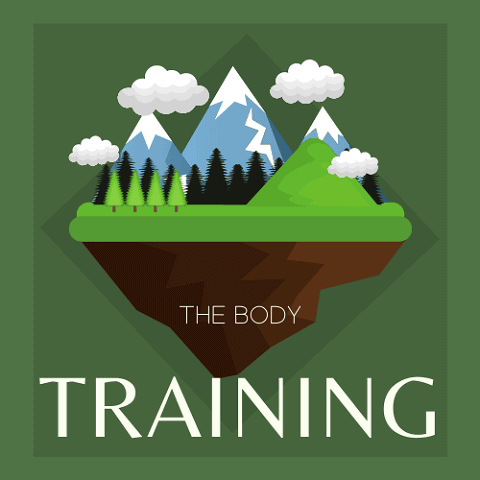Fact checked by Steven Lines, lifelong Hunter and Outdoorsman .
.
Archery has been around for hundreds of years. What started as an essential survival skill and martial art has now become a popular sport.
One of the most classic types of bows is the recurve bow. Modern versions have been manufactured for hunting and sport for decades. There are plenty of older bows out there. Some have been well cared for, while others have been forgotten to time and exposed to the elements.
Maybe you’ve found an old bow and are wondering, are old recurve bows safe to shoot?
The answer depends on how the bow was cared for and the conditions to which it was exposed. If a bow has been appropriately cared for and maintained, it can be safe to shoot for decades.
If you are unsure about what conditions the bow has seen, you need to test it cautiously before firing it.
Recurve bows are some of the most dangerous when they fail; as such, you should always exercise caution when testing an old recurve bow.
In this post, we'll cover:
Bow Storage
Bow storage and maintenance play a huge role in determining the lifespan of a bow. When considering the safety of an old bow, consider the potential storage conditions you found it in.
The following is how a bow should be stored long-term:
- The bow should be unstrung.
- Hang the bow upside down, resting on the two tips of pegs
- Cool, steady temperature (not cold)
- Moderate humidity
A strung bow has subtle pressures that will warp the bow over extended periods. Hot or rapidly changing climates will also cause warping.
Finally, moisture is readily absorbed by wooden bows causing them to warp.
If any of these conditions are suboptimal, you should be extremely cautious about testing the bow. It may be best to buy a new recurve bow for shooting.
Take it to an Expert
The safest option is to take it to the shop. If you have a shop that deals with traditional recurve bows, you should bring your bow in for examination. However, not everyone has such a shop close by.
If you cannot take your old recurve, bow to an expert for inspection and testing. There are some sequential tests that you can do to check the bow for safety.
It is essential to start at the beginning of these steps as you want to test the bow’s integrity progressively. If you go right to a full draw on the bow and it fails, you and any bystanders will be at risk for serious injury.
Recurve bows are built to be simple. They do not have redundant parts, which means they will only be safe to use if every piece has optimal structural integrity.
Visual and Touch Inspection
The first step in testing an old bow is to clean and inspect all bow components for physical damage and wear. If you see any abnormalities, do not use the bow. You will want to take your bow into the shop to see if they can repair it to a useable condition.
If you do not see any signs of stress, cracking, delamination, or other damage to the bow, you can check the limbs for microdamage using a wet cotton ball.
Run a wet cotton ball over every surface of the limbs and look for cotton that gets caught on splinters. If you do not have a cotton ball, you can run your finger along with the recurve limb. Be careful. If you go too quickly, the splintered piece of wood will end up lodged in your finger!
Replace the string and repeat the cotton ball or finger check. No matter what, you should replace the string. Strings can fail quickly, even if you do not see any wear and tear on them.
For older bows, you will want to use a Dacron bow string.
Do not use Fast Flight, D97, or other strings designed for modern bows. These strings require extra reinforcement on the limb tips and are not suitable for traditional recurve bows, let alone a recurve with unknown integrity.
Now that you have visually and physically inspected the bow, you can begin flex testing.
Flex Testing
With the string replaced, you can begin to test the bow progressively. Now would be the time to put on safety glasses to protect your eyes in the event of bow failure.
Check the minimum draw weight and bow length to make sure you do not exceed them during testing.
It is crucial to start slow and apply light pressure. Then you will want to ramp up the amount of pressure slowly.
Use an archery/hanging scale to apply precise draw weight.

- ✔️Portable: mini size hand held crane scale with S-shape hook, 300kg/660lb capacity, suitable for farm, hunting, fish weight, travel and more indoor outdoor activities
- ✔️Multi-function and Accurate: press "UNIT" to switch from "lb" to "kg" to "N". Press "HOLD/TARE" to turn on or off hold readings function for further use. The increment is 0.05kg / 0.02lb / 0.1N. The accuracy is ± 0.1%.
- ✔️Assembly: please refer to the product image to assemble within minutes; disassembly is also easy when you need
Last update on 2024-05-12 / Affiliate links / Images from Amazon Product Advertising API
Check out this helpful how-to if you need guidance on using this tool.
Begin by drawing the bow to 10lbs or 6-inch draw length. If you do not have archery or hanging scales, draw the bow back about 6 inches.
As you draw the bow back, listen carefully for any creaking or cracking sounds. Immediately discontinue if you hear any cracking.
Slowly release the bow back to its resting state. Do not dry fire your bow; dry firing can damage your archery equipment.
Repeat this process 25 times and check again for cracking.
Increase the draw by 10 lbs for a total of 20lbs or 6 inches for a total of 12 inches. Repeat this pull 25 times while listening for sounds that indicate structural failure. Complete another check for cracking.
Increase the draw by 10 lbs or 6 inches for each interval. Repeat the process of increasing the draw weight/distance, pulling 25 times, and checking for damage until you’ve hit the maximum for your bow and string.
Once you have completed this process, you can begin to take some test shots with the bow.
Shot Testing
Now you know the bow can be pulled back to a full draw. You will want to begin to test its ability to shoot.
Check the bow’s accuracy, ensure your arrow rest is firmly in place, and repeat the inspection for damage throughout shot testing.
Shoot six arrows and recheck the bow for cracking and damage.
Shoot 12 arrows and recheck for damage.
If you do not find any damage after these tests, draw the bow to full draw length and have someone else visually inspect the bow while it is drawn. They should also repeat the cotton ball test while the bow is drawn.
When you pull the bow to full draw, you may see stress fractures or delamination not detectable when the bow is at rest.
The Last Shot
When testing an old bow, you want to be cautious as bow failure for recurve bows can be catastrophic and dangerous. Always wear protective gear.
If you have a setup that can draw the bow without human contact, you should complete your test draws using this equipment. Either way, go slow and progressively ramp up the pressure applied to the bow and string.
The storage conditions of a bow and maintenance are what will determine its lifespan. Bows should be stored in temperate conditions, not too hot or cold, not too dry or moist.
Extremes can cause warping of the bow materials, especially wood. They should be stored unstrung to decrease the stress on the bow during storage.
No one knows when a bow will fail. A good bow should last a lifetime if stored and maintained correctly.

Steven Lines is a hunter and outdoorsman from Safford, Arizona, USA. Since he was a child, he has been hunting and fishing and has over 20 years of outdoor experience. Steven works as a hunting guide in Arizona during his spare time and runs a Youtube channel dedicated to sharing his outdoor adventures with others.
dedicated to sharing his outdoor adventures with others.


